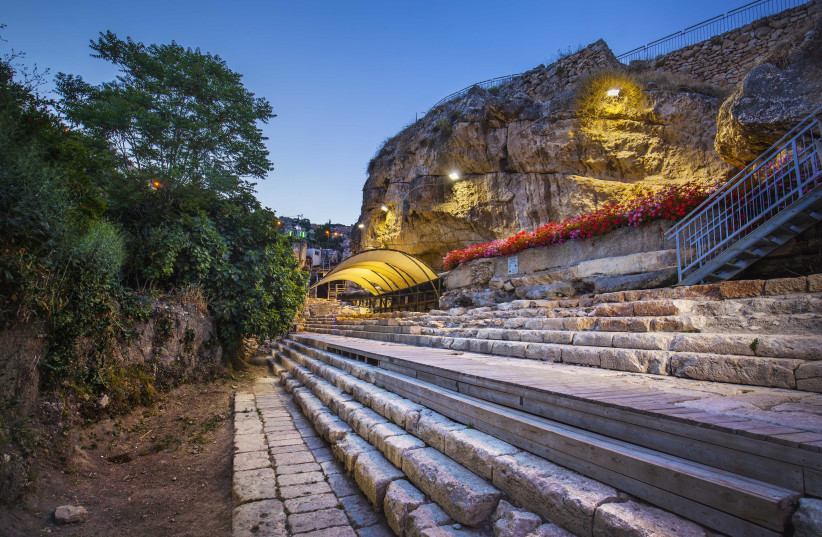One of the most popular Jewish festivals is Simchat Torah, which falls on the last day of Sukkot. As its name suggests, Simchat Torah means the joy of the Torah. There is no record of this holiday before the 11th century, and its origin seems to have been in Western Europe.
The highlight is when all the Torah scrolls are removed from the Holy Ark and there is a joyful procession with them around the synagogue. This circling of the synagogue with the Torah scrolls is called hakafot, and it is necessary to make seven circuits. It is a mystical imitation of a wedding, symbolizing the marriage of Israel to the Law. It even has a bridegroom of the Law (hatan Torah) and a bridegroom of the first portion to be read (hatan Bereshit). They hold the sacred scrolls in their arms until they are summoned to read their portions. The procession with the scrolls resembles the wedding custom of the bride walking seven times around the groom to form a closed circle (possibly to prevent the assault of evil spirits).
A special feature of the service is calling all children under 13 years to the reading of the Law. The final verses are read while the children stand under a large tallit (prayer shawl) spread above them like a canopy. The children are blessed with the words Jacob used to bless Ephraim and Manasseh (Gen. 48:16): “The angel who hath redeemed me from all evil, bless these children.”
There is a lovely Simchat Torah custom in Jerusalem’s Beit Hakerem, where I live. At a certain designated time, all the local synagogues meet (there are four of them in the area), carrying their Torah scrolls to Denya Square, in front of the supermarket. There, with singing and dancing, they invite all the passersby – secular and religious alike, and particularly the children – to join in the merriment. For me, this is the highlight of the day, with toddlers being carried on their fathers’ shoulders, and many people, possibly for the first time ever, joining to dance with the Torah scrolls.
Prayer for rain in Israel is an important part of Simchat Torah
THE PRAYER for rain in Israel is an important part of the Simchat Torah liturgy. “When do Jews and gentiles rejoice together? Only when it rains” (Gen. Rabbah 13:6). For drought is the scourge of the Earth, and rain its greatest blessing.

Tishrei, the seventh month, is linked to the start of Israel’s winter rains, and crops will fail without them. We plead for rain in the merit of Abraham, Isaac, and Jacob, Moses, Aaron, and the 12 tribes.... “For a blessing and not a curse; for life and not for death; for plenty and not for famine.”
The Mishna tells us that “the world is judged through water.” To this day, we recite a prayer for rain on the last day of Sukkot, as rain is Israel’s life blood. Good rains mean prosperity; drought means ruin for the country’s kibbutzim, moshavim, and agricultural settlements.
Linked to the prayer for rain is another Sukkot ceremony emphasizing the value of water. It is known as Simchat Beit Hashoeva, the joy of the drawing of the waters. In Temple times, it was practiced with great enthusiasm and zest. No one is certain of how it started, but it was mentioned in the Book of Isaiah. Beginning on the second evening of Sukkot, it lasted for six nights. Jerusalemites and pilgrims flocked to the outer court of the Temple. An enormous golden candelabra was fed with vessels of oil by young priests until flames leaped toward the sky.
The most pious men led a torch dance, and the Levites led the people in chanting hymns and psalms to the music of flutes, harps, and cymbals. They danced and sang until dawn, when the long procession wended its way to the Pool of Shiloah. This pool was formed by the overflow of water in Hezekiah’s tunnel, which led from the Gihon Spring into the city.
At the pool, a golden ewer was filled with water and brought to the Temple, where the high priest poured it over the altar. Today there is no Temple, no altar, and no water in the Shiloah Pool, but the drawing of the waters is symbolically recaptured every year with singing, dancing, and rejoicing in the Jewish Quarter of the Old City, near the Pool of Shiloah at the base of the City of David.
Nowadays on Simchat Torah, Jews all over the world remember Israel’s need for rain on the last day of the festival. The prayer for rain concludes with the reader chanting, and the congregation responding: “For Thou art the Lord our God, who causest the wind to blow and the rain to fall. For a blessing and not for a curse. Amen. For life and not for death. Amen. For plenty and not for famine.”
It is a fitting benediction to end the festival of Simchat Torah and Sukkot, in which three times we are commanded to rejoice. After the solemn festivals of Rosh Hashanah and Yom Kippur, this gives us its blessings: “May you have nothing but joy!” ❖
The writer is the author of 14 books. She can be reached at: dwaysman@gmail.com
